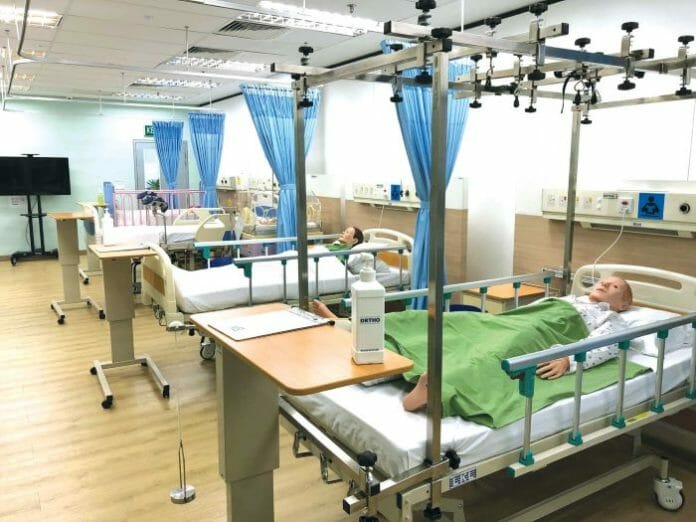In today’s increasingly complex climate, emergency response plans (ERP) and business continuity management systems (BCM) are major plans organisations prepare to mitigate and overcome the ever-changing threats and crises. While emergency response plans are crucial to save human lives, business Continuity ( including incident response plans ) is important to minimize the impact of unexpected outcomes that might shock the business operations.
Despite the complimentary nature of the 2 plans, they are often carried out in silos. Although this model might have worked in earlier years, today’s threats often straddle between ERP and BCM. The need to combine the plans is particularly prevalent in healthcare which faces a stringent set of rules as an emergency could have severe consequences and threaten lives if things go wrong. While the focus of emergency response must be on the safeguarding of human lives, safety, and health, Crisis and Incident Response for healthcare organizations need not be to safeguard the same level of profitability as commercial banks are compelled to. Instead, the Business Continuity baseline is closely intertwined with their Emergency Plans which is to continue hospital operations to ensure the adequacy of health care and any cause of irreversible health conditions should a disruption of operation occur.
In other words, the risk profile in the healthcare industry is vastly different from other industries and requires different management methods. Despite possessing a unique set of risks and an arguably higher level of accidents compared to most industries, the healthcare sector has been criticized for its ‘reactive nature’ and having insufficient planning for emergency response and Business Continuity. One potential reason is the lack of clarity on the types of risks and consequences that follow. To dispel the misconceptions about the over-simplified risks of healthcare, this article seeks to spell out the impacts the various healthcare-centric risks could possibly cause.
The main difference between emergency and business continuity differs across industries. In the case of the healthcare industry, the focus is on the protection of patients and the quality of care that the organization provides. In short, the industry is more dependent on the services and goods that it consumes in order to uphold the same standards and protect the well-being of its patients. Having the right emergency response plan is also very important to ensure that the operation and Business Continuity of the organization are able to maintain. These salient points of a typical healthcare organization’s risk consideration can be seen from Manpower, Material, Machine, infrastructure, and facilities perspectives below.
- Manpower Shortage
One of the biggest risks that the healthcare industry faces is the shortage of manpower. This issue can affect the quality of care that the organization provides. In the case of a pandemic, a sudden surge in Covid-19 patients could cause the healthcare system to collapse which was what that was evidently seen in many countries. This resulted in the compromising of the level of care. While pre-pandemic the healthcare industry was making good progress in technological adoption in the healthcare industry by hopping on the industry 4.0 bandwagon, the labour-intensive nature of the job remains. Even with sufficient volunteers, it takes time to train them to be proficient enough to contribute to the industry – time that the industry might not be able to afford. The lack of a deployable pool of healthcare workers causes an administrative “bottleneck”. This impedes the organization’s capability to handle mass casualties during large-scale emergencies with short notice, as depicted in the examples of other countries in disaster scenarios such as forest fires, landslides, mass shootings, airline disasters.
- Material Scarcity
Ensuring a consistent flow of consumables is another crucial aspect expected of healthcare organizations and may impede operational efficiency and ruin reputation of organizations if handled poorly. Medical services require large flows of drug medications and sanitization relies heavily on disposables – ranging from latex gloves to IV drips. Disruption of these consumables would not only disrupt regular operations but could also render medical personnel helpless without materials and tools on hand. The butterfly effect of the grounding of Container vessel “Ever Given” at the Suez Canal, and the global logistical disruption that ensued have highlighted the fragility of supply chains (Ramos, et al., 2021). The amplified logistical risks in the field of healthcare mean that insufficient medical supplies could endanger lives. Practitioners should consider the far-reaching consequences of consumables shortage, which would ensure activation of supply chain business continuity
Modern medicine hinges on specific equipment and machinery tools, which means supply disruption at production sources will inevitably adversely affect the ability of healthcare organizations to continue their business. From diagnosis to treatment to after-care, medical services cannot operate smoothly without high-tech machinery like x-ray machines, CT scanners. Reliance on machines was highlighted during the global semiconductor shortage, which had a massive impact on the medical industry as machines required for procedures were unable to function due to the lack of parts. The machinery required for treatment using medical implants like pacemakers also could not be delivered in time due to a shortage of microchips.
- Infrastructure & Disasters
Further contributing to industry-specific risks, healthcare centres are also inherently vulnerable to disasters including fires, explosions and loss of electricity or water supply. Due to the nature of the amenities such as oxygen tanks, healthcare centres such as hospitals are inherently at higher risk of explosions when a fire breaks out. At the same time, they have more complex procedures as evacuating non-mobile patients in event of fire would require much more skill and coordination across departments when compared to evacuations from a Grade A Office.
Healthcare organizations also bear more severe consequences as compared to other industries. While other industries will be inconvenienced by loss of utilities, such disruptions would cause healthcare centres to cease operations entirely. Even if the power generators only stop working for mere minutes, the impact is beyond a regular blackout as the lives of patients hooked up on machines for life support are endangered, and critical surgeries in the Operating Theatre (OT) would be disrupted. In essence, healthcare industry has an incomparable high dependency on infrastructure such as electricity and clean water, and disruption of any infrastructure would cause major impacts that threaten the loss of life.
- Facilities and Premises
Facilities for treatment is critical to ensure proper sanitation, maintain the comfort of patients and for medical personnel to work efficiently in high-stress and high-concentration environment. Any disaster or crisis that leads to loss of premises – be it due to a fire that burned down the facilities or evacuation due to gas leaks, the problem of premises faced by the medical industry is that operations cannot occur along the roadside, and patients cannot simply recover in open fields. In particular, Accident & Emergency (A&E), Intensive Care Unit (ICU) and OT have specific set-ups that ensure efficiency and are crucial for medical services to be carried out.
In closing, emergency management plans are complex, and it is intertwined with the business continuity plan for healthcare organizations. Given the high risks borne, healthcare organizations must take time to craft such plans. It would benefit organizations to reflect on past events to determine required actions such as the declaration of emergency, evacuation and calling for external aid. With a clear plan, improving buffers for manpower and diversifying suppliers, healthcare organizations would be better prepared to take on emergency situations and manage crises in the long haul.
Written by: BCP Asia Consulting Team









